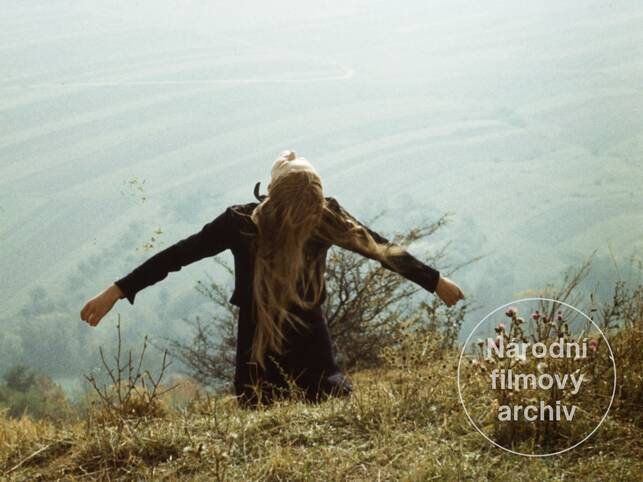Summary
This intimate drama from Jaromil Jireš acquaints us with the personality of Marie Kudeříková (1921–1943), a communist resistance fighter who was executed by the Nazis in March 1943, when she was just 22 years of age. The story describes the last 99 days of Marie’s life spent on death row in a jail in the Polish city of Wroclaw. In a series of flashbacks, the reasons why the heroine has been condemned are presented along with the events that resulted in her joining the resistance. A first great flush of emotion, opposition to the occupation, and the passivity of those around her all led an ordinary girl from a rural Catholic family to embark on a path full of danger that would end tragically.
Although ...a pozdravuji vlaštovky (Greetings to the Swallows) was released in 1972, the style and form of the story puts it in the same company as Jireš’s earlier work linked with the Czechoslovak New Wave, especially the director’s drama Žert (The Joke) from 1968. The screenplay for the film was written in the 1960s and it is therefore no wonder that, instead of a portrait of a communist icon, it offers the poetic and sensitive story of a girl on the threshold of death who comes to terms with her fate. Together with his co-screenwriter Zora Beráková, Jireš based the script on Zlomky života (Fragments of a Life) – a posthumous collection of letters home that Marie Kudeříková wrote in prison. Thanks to their civic-minded and authentic approach to the material, the writers managed to avoid taking a simplistic ideological view. The film, therefore, remains a rare example of a movie from the “normalisation” era of Soviet entrenchment after the Warsaw Pact invasion which managed in a heavily censored environment to maintain contact with the best traditions of the Czechoslovak New Wave. Jireš’s favourite collaborators – the cinematographer Jan Čuřík and the composer Luboš Fišer – played their part in ensuring the film was a success. The actress Magda Vášáryová gave a remarkable performance in the lead role.
Read more






